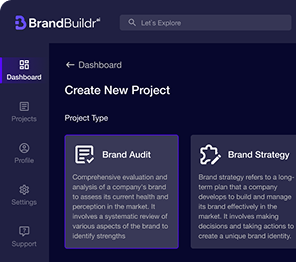A recent study by McKinsey states that 87% of companies worldwide are experiencing IT talent shortages due to a lack of talents in their area, recruitment bottlenecks, skills gaps, and so on.
As a popular solution to this issue, companies opt to outsource their IT functions or hire third-party contractors to perform the whole IT function or work on specific components. Despite the popularity of IT outsourcing, some companies haven't still jumped on that bandwagon.
This article is for you if you hesitate to delegate your IT functions to external experts. Let's discover the key benefits of IT outsourcing below.
When it's the best time to outsource?
Stephen Covey, the author of The 7 Habits of Highly Effective People, once said: “Outsourcing is inevitable, and I don’t think it’s necessarily treating people like things.”
In a nutshell, IT outsourcing is equally beneficial for startups or mature enterprises. For example, outsourcing during the business startup period ensures stable infrastructure operation and further network development. If you're an established and growing organization, IT outsourcing helps you resolve the issue of outgrowing the existing qualification and support your current workforce in improving the quality of services.
.avif)
1. Access to a Broader Talent Pool
Shortage of talents or lack of specific skills often leads companies to search for the right specialists outside their area or even a country. Basically, IT outsourcing allows you to:
- Get access to a broader talent pool and necessary expertise. You can pick a company specializing in a narrow field like a programming language or a domain and get quality services. Unlike freelancers or temporary contractors, outsourcing companies build an IT structure with you, focusing on long-term effects.
- Stay flexible. You don't need to reduce your workforce or re-profile. Outsourcing helps you retain the workforce and continue work with extra human resources and the expertise you need.
- Maintain uninterrupted work. Outsourcing guarantees smooth operation and lack of downtime during calendar holidays, weather conditions, or any other events. Thus, qualified specialists will constantly diagnose your IT infrastructure and eliminate emerging issues.
2. Acceleration of Business Processes
By outsourcing your IT operations, you can focus entirely on your business processes and invest more time and effort in the core product.
Moreover, outsourcing helps you scale your business seamlessly. For example, increasing or reducing the business inevitably comes with optimization of human resources: training costs, new workplace equipment, payment of extra taxes, etc which requires time and additional costs. All these changes may lead to reduced business mobility and increased costs.
3. Costs Reduction
One of the significant benefits of IT sourcing is the optimization of costs. Think about it: by outsourcing, you don't need to invest in expensive office rent, staffing and training costs, equipment, tax costs, and salaries. Popular countries for IT sourcing have much lower wages and hourly rates which allows you to significantly save on the payroll.
Besides, an outsourcing company takes over the creation and maintenance of the company's IT infrastructure, which, in turn, reduces the number of specialists within the company.
Finally, you can negotiate the exact fixed cost of the project or choose from several price options to save money and prevent any budget overruns.

4. Security and Information Safety
A common objection against IT outsourcing is: "How do they guarantee the data safety and confidentiality?"
In fact, outsourcing is contrary to this popular thought. As a rule, IT services include risk analysis. In many cases, qualified specialists (CTOs and software engineers) audit the existing IT infrastructure before the actual work reveals bottlenecks, security vulnerabilities, bugs, and so on. After a comprehensive examination, experts provide recommendations on reducing the risk of data loss and hacking.
Speaking about data confidentiality, an IT outsourcer signs a non-disclosure agreement (NDA) with each client. This document guarantees the confidentiality of all information obtained during work and imposes responsibility on the outsourcer for disclosure.
5. Quality Standards
Gone are the days when companies worked with IT contractors at their own risk. Today, IT outsourcers and companies are protected by numerous mechanisms ensuring quality work. For example, both companies sign an SLA (service level agreement) which spells out all the quality standards and services that must be provided by an outsourcing company and sets clear rules of the game for both sides.
As you can see, outsourcing IT services allows you to grow the business profitability, concentrate your efforts on critical business tasks, and involve external experience and expertise. Indeed, there are some bottlenecks you have to consider. To boost the profit from IT sourcing, pay attention to cultural differences, time zones, and past projects a company has worked on. That's how you'll ensure maximum benefit and seamless integration into your internal workflow.

Heading 1
Heading 2
Heading 3
Heading 4
Heading 5
Heading 6
Lorem ipsum dolor sit amet, consectetur adipiscing elit, sed do eiusmod tempor incididunt ut labore et dolore magna aliqua. Ut enim ad minim veniam, quis nostrud exercitation ullamco laboris nisi ut aliquip ex ea commodo consequat. Duis aute irure dolor in reprehenderit in voluptate velit esse cillum dolore eu fugiat nulla pariatur.
Block quote
Ordered list
- Item 1
- Item 2
- Item 3
Unordered list
- Item A
- Item B
- Item C
Bold text
Emphasis
Superscript
Subscript





















.avif)



.avif)

.avif)


